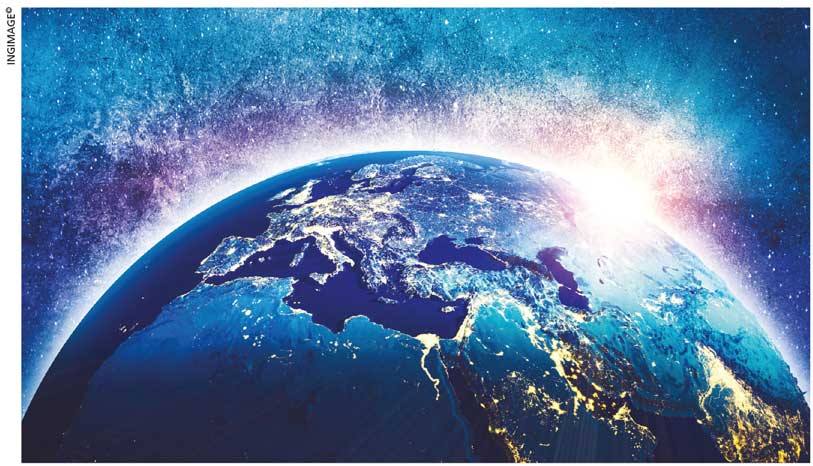GLOBAL WARMING
AI AND CLIMATE EMERGENCIES
Akila Wijerathna explains how AI can help manage the world’s climate crisis

The COVID-19 pandemic is a global rehearsal for the larger catastrophe on the horizon: global warming. Scientists are trying to predict how climate change is likely to impact society, agriculture and food security, health, rising sea levels, frequent extreme weather events, natural disasters, infrastructure, biodiversity and ecosystems.
Over the past decade or so, climate change and its related impacts have been annually evaluated in the World Economic Forum’s (WEF) top five global risks. According to the World Bank, US$ 158 trillion worth of physical assets are at risk without preventative action to mitigate climate change.
This is double the total annual output of the global economy.
Many businesses are already facing the implications of climate change such as rising insurance costs, since claims for extreme weather events are escalating.
Technology is changing our world, bringing new challenges and opportunities for sustainability. Today, AI helps us to better manage the impacts of climate change and protect the planet. Artificial intelligence can perform calculations, make interpretations and take decisions that typically require human knowledge.
The latter includes the capability to learn from experience, adapt to new situations and handle abstract ideas.
Under AI, we have Symbolic Reasoning (SR) and Machine Learning (ML). In SR, the human writes an algorithm for a machine on how to provide an output based on an input. In ML however, the algorithm doesn’t react to the input. Instead, a human writes code, and the machine ‘learns’ the algorithm and produces an output.
AI’s capacities are rapidly improving, and vast amounts of data are being collected by sensors, satellites and the internet. The development of efficient computers, open-source software, smartphones, data and cheap cloud data storage has made AI more accessible.
The most significant development for sustainability is the increasing ability to generate, capture and transmit, as well as learn, from data. Today’s artificial intelligence is about simulating, mimicking or imitating human intelligence processes by computer systems.
While AI is expected to be a key driver in addressing these challenges, its capabilities must be greatly expanded for human input and human behaviour. The implications for what we can do with this data are huge and will be a critical element for achieving climate action, which is Sustainable Development Goal (SDG) 13.
Therefore, with almost real-time data, decision makers and authorities will be able to respond to problems more quickly. AI can promptly discern patterns that humans cannot, make predictions more efficiently and recommend better policies.
A study led by scientists from the University of Pennsylvania disclosed 13 areas where ML can be developed – e.g. energy consumption, carbon dioxide removal, education, solar engineering and finance. The outcomes include monitoring deforestation, creating new low carbon materials and greener transportation.
The adoption of artificial intelligence to address climate change is also growing – with success in tracking greenhouse gas emissions and tracing leakages at industrial sites, as well as using it to improve energy efficiency in facilities and industrial processes.
By analysing high-resolution photographs, we can study global warming, deforestation and afforestation. For instance, AI can be used to understand how the distribution and composition of forests change in response to hurricanes. This is important because when forests are damaged, vegetation decomposes and emits more CO2 into the atmosphere.
Better technology can help navigate these obstacles and result in more sustainable agriculture. For instance, heatwaves and extreme drought patterns can be used to manage crop varieties and use water efficiently.
As rising temperatures have extensive impacts on agriculture, data from sensors in the field that monitor crop moisture, soil composition and temperature will help AI improve production, and know when crops need watering.
Incorporating this information with that which is gathered by drones can help increasingly automated AI systems to know the best times to plant, spray and harvest crops, and when to head off diseases and other problems. This will result in increased efficiency; enhanced yields; and a reduced use of water, fertiliser and pesticides.
A growing population, technological advancement, urbanisation and increased rates of consumption of everything from energy to consumer products are putting increasing pressure on our natural resources. Therefore, AI has a greater potential to help our decision-making capabilities in a data driven way.
However, the technology needs to be developed carefully since it is still in its infancy and climate models are mathematical simulations of different factors. When it comes to forecasting the future therefore, uncertainties remain.




